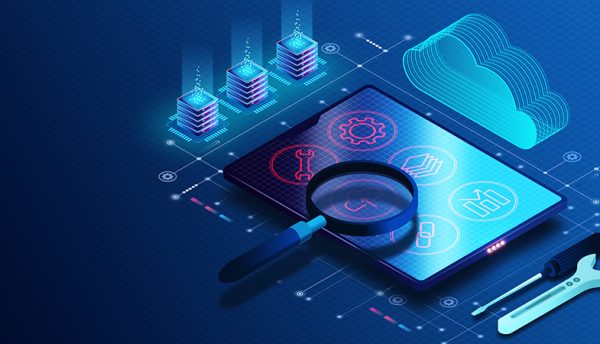As the worldwide need for swifter connections and greater data escalates, current technology’s limitations underscore the urgency for next-generation solutions. John Diamond, Solutions Architect, Park Place Technologies, highlights how embracing automation will be paramount for maintaining a competitive edge and readying ourselves for future technological advancements.

Automation is transforming the data centre industry, providing innovative solutions to keep pace with rising demands for efficiency, scalability and sustainability. As technology evolves, data centres are under increasing pressure to maintain performance without compromising reliability. To meet this challenge, a new generation of automation tools has emerged, offering intelligent and efficient ways to manage data centres. Examples include Artificial Intelligence (AI) and Machine Learning (ML), Software-Defined Data Centres (SDDCs), Edge Computing, containerisation and green data centres.
The impact of these tools is substantial, allowing data centres to operate with greater agility and resilience, while also reducing costs and lowering their environmental footprint. Automation is becoming increasingly critical to the data centre ecosystem, redefining how these vital digital infrastructure hubs function.
AI and ML became an almost instant staple in mainstream culture following the launch of ChatGPT. The applications have permeated nearly every industry, fundamentally reshaping operations and strategic decision-making across the board. These powerful tools are now within reach for everyone, from large corporations to sole proprietors, driving an unprecedented wave of innovation, productivity and competitiveness across the global economy.
This demand requires immense computational power and storage capacity, placing extreme pressure on data centres to deliver high-performance solutions while maintaining efficiency and minimising downtime.
Expectedly, AI and ML are also critical components in data centre automation. For example, data centres can use AI-powered predictive maintenance solutions to monitor networks 24/7 and flag system anomalies that may indicate potential issues.
Here are some additional AI and ML use cases to consider as well:
- Automated resource allocation: AI-driven tools can automatically adjust resource allocation based on real-time data, ensuring optimal performance and reducing energy consumption. This capability is crucial in managing data centre workloads efficiently, especially with fluctuating demand.
- Smart load balancing: Machine Learning algorithms can analyse traffic patterns to optimise load balancing, distributing workloads across servers to prevent bottlenecks and improve overall performance. This smart distribution of resources reduces latency and enhances user experience.
- Intelligent capacity planning: AI and ML can forecast future capacity needs by analysing historical data and trends. This enables data centres to scale resources in advance, avoiding over-provisioning or under-provisioning, which can be costly and inefficient.
- Self-healing systems: Some AI applications are designed to automatically resolve common issues without human intervention. This ‘self-healing’ reduces the need for manual troubleshooting and allows data centres to maintain high availability and uptime.
These advanced applications of AI and ML are creating a more efficient and resilient data centre environment. By harnessing these technologies, data centre operators can achieve greater operational agility, reduce costs and improve overall performance.
Software-defined data centres: The key to flexibility and scalability
To sustain the momentum from AI and ML-driven innovations, data centres need a resilient underlying infrastructure. Too many data centres rely on strictly on-premise hardware and static architecture, but these facilities often struggle to keep pace with today’s rapidly evolving digital demands. As businesses grow and technology advances, flexibility and scalability become critical. Software-Defined Data Centers (SDDCs) address these challenges by virtualising servers, storage and networking. This allows data centres to become more flexible and easier to manage.
However, transitioning to SDDCs can be complex. The initial setup requires a significant investment, and not all existing hardware supports virtualisation. Security is another consideration as shared resources in these environments can create vulnerabilities. To mitigate these risks, businesses must implement robust security measures and ensure compliance with industry standards.
Despite these challenges, SDDCs offer significant advantages. They provide a scalable solution for businesses looking to expand their operations, allowing them to respond quickly to changing workloads and customer demands. SDDCs also facilitate integration with cloud services, bridging the gap between on-premise and cloud-based infrastructure.
Overall, SDDCs represent a way to manage data centres, combining the benefits of virtualisation with greater flexibility and scalability. By adopting this approach, businesses can create a more efficient and resilient data centre environment.
Exploring innovative data centre solutions
Beyond AI/ML and SDDCs, data centre automation is powered by many other bleeding-edge innovations. Here are a few examples of critical technology contributing to the next phase of data centres.
Edge Computing’s ability to process data at or near the source reduces latency and enhances real-time processing capabilities. This is essential for applications that require immediate responses, such as IoT devices, autonomous vehicles and remote monitoring systems. Edge Computing complements automation by decentralising data processing.
Containerisation and microservices
Containerisation enables applications to run in isolated environments with consistent configurations. This approach supports microservices, where complex applications are broken down into smaller, manageable components. Containerisation enhances automation by streamlining development, testing and deployment, making it easier to scale and maintain applications in data centres. Automated orchestration tools then allow data centres to manage containers and microservices at scale, providing automated resource allocation and load balancing.
Green data centres focus on energy efficiency and renewable energy sources, adopting sustainable practices to lower operating costs and reduce environmental impact. Automation plays a key role in green data centres by optimising energy usage and improving cooling systems. Innovations like immersion cooling and solar power integration can be automated to further reduce energy consumption.
Data centre automation: The ripple effect on our connected world
Automation is at the heart of global transformation. How data centres operate today determines the speed and scale at which our digital world can evolve. As technology continues to advance, data centres face increased pressure to deliver faster and higher performance, with maximum uptime.
The data centre industry is evolving rapidly, with automation, AI/ML and SDDCs at the helm. However, innovations like Edge Computing, containerisation and green data centres are magnifying what data centres can achieve. These advancements are essential steps toward a more flexible, sustainable and efficient data centre ecosystem.
As the data centre industry continues to evolve, innovation in automation will be key to staying ahead of the curve and preparing us for the technological breakthroughs of tomorrow.
Click below to share this article







